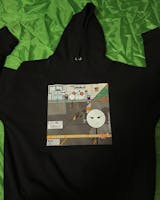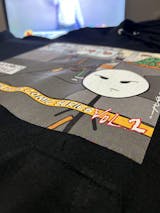DTF transfers, the revolutionary printing technology in the textile industry, offers the best solutions. High quality prints are obtained from this printing technique, which stands out with its vibrant colors and image resolution. Although it is easy to produce these prints, there are some elements to be considered. In this article, we will discuss tips for hot transfer printing for quality print results.
The Quality of the Transfer Paper Used Should Be Well Selected
The quality of the transfer paper is very important in hot transfer applications. Because this element affects the final print. There is a wide variety of transfer paper and it can be difficult to choose. However, high quality papers stand out. Transfer papers that are suitable for this quality provide the best ink absorption and color transfer. It also guarantees image clarity, so you can choose it to get the best solutions.
Checking the Heat Press
There are many considerations when producing high quality prints. The correct use of the heat press is one of them. For this reason, the temperature and pressure settings must be calibrated according to the ink and transfer paper before starting printing. On the other hand, equal pressure must be applied. Because in this way it is possible to distribute the ink evenly on the fabric.
Using High Quality Ink
Inks are of great importance in the DTF printing process. Although the quality of the transfer paper is important, the type of ink is also a factor that affects the quality of the print. Bya base ink should not be preferred for special DTF transfers. Instead, it would be better to use pigment-based ink. Because pigment-based ink is advantageous for heat transfer by producing durable and vibrant colors. It can also be used for a long time as it does not fade immediately.
To Follow the Application Instructions Prepared for Heat Transfer
Although there are many instructions and tips about heat transfer on the internet, the best one is the one prepared by the print manufacturer. Because this instruction includes the printing steps according to the individual's design. Therefore, important information such as temperature, time and pressure are more specific. This makes sense when you consider that each transfer has its own application time and temperature. You can also follow the recommended heat transfer application instructions closely. You can get the best printing result thanks to these instructions, which are specially prepared according to the application surface and transfer type.
Optimizing the Image
To achieve high quality heat transfers, it is necessary to optimize the image. If the image is optimized, image resolution is ensured. Along with this, the accuracy of the colors is also ensured. To maximize the image, it is enough to size it appropriately and place it on the transfer paper.
Using Heat Press Accessories for Difficult Application Surfaces
Although DTF printing requires a simple application process, it can sometimes be difficult. For example, printing on the chest of a polo shirt can be tricky. It may be wise to use a non-stick cushion or a replaceable bottom heat plate when printing these areas. These accessories should be used for an even pressure effect. It is possible to mention many more printing accessories for surfaces that will be difficult to print on. For example, heat press plate protectors have been designed as a solution against threadability.
Heat Transfer Should Be Flat on the Garment
It provides more aesthetic printing solutions when the heat transfer is flat on the garment. To be sure of this, it is necessary to fold the garment in half in the middle. When done this way, the center of the garment will be better understood. A small crease will form, allowing the pressure to be applied more evenly.









